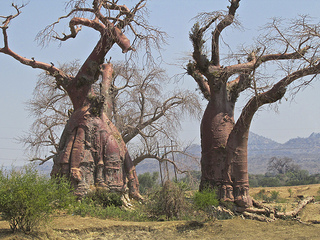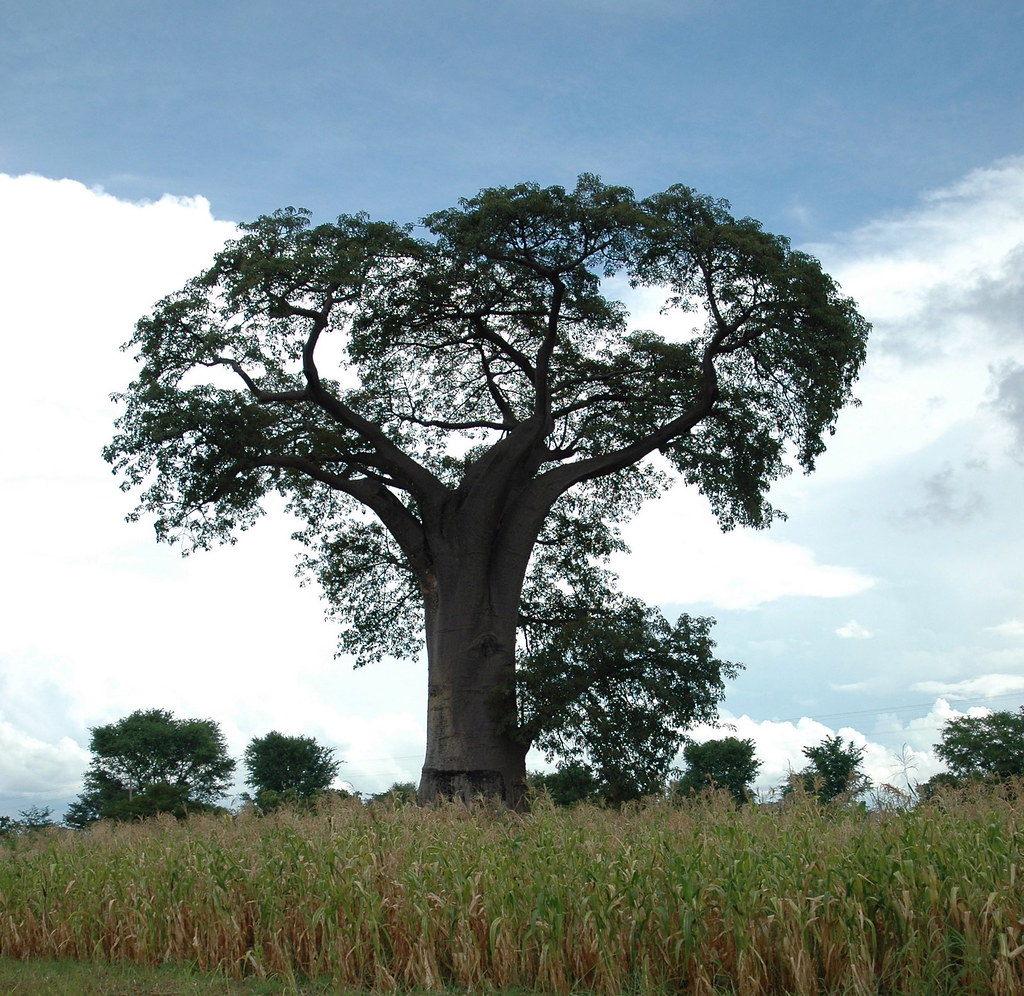Southeastern Malawi … When national treasures in Malawi are mentioned almost immediately someone will offer Lake Malawi, with its beautiful sand covered shores, and crystal blue waters. Others will name Mount Mulanje, at 3,002 m or 9,849 feet high, the highest peak in the nation. Still others might name the animals in the various game parks, or the ancient villages that dot the nation’s landscape in nearly every direction. However, a major treasure that is often overlooked are the giant baobab trees that punctuate the skyline in the lower Rift Valley, near the Shire River.
Valley of Giants
Gliding along Highway 5 south of Salima, in the eastern part of Malawi, one begins to pass more and more of them. This is the valley of the giants. As though they are a military guard on a critical mission, they stand sentinel tall guarding the valley from unseen intruders. They are the giant, stately, baobab trees, and it is said some have stood here since before Christ walked the Judaea hills. They have warded off disease, old age, and long droughts, but in recent years an unexpected enemy has threatened their very existence. It is not a new source of danger. It comes from a familiar direction, from within the perimeter of their realm. The threat comes from a long-time friend. Man himself.
For centuries these trees, and human beings, have co-existed and been at peace with each other. This has allowed the trees to grow freely. They are indigenous to only this part of Africa, and nowhere else, and they are a treasure imbedded in time. However, the increasing population, and reduction of other trees through cutting for firewood, has put the giant baobab in line for destruction in the increased quest for materials for the cooking fires critical to the villagers. As one travels south more and more baobab trees are seen that have been maimed or destroyed. One by one the traveler realizes they are passing the end of thousands of years of history.




